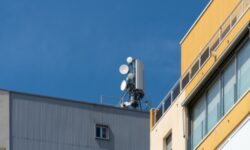How UL, New Tech Is Targeting Nuisance Smoke Alarms
Check out the new testing standard being cooked up by UL to help combat kitchen-related nuisance alarms, as well as the latest in detector technology.

This month I want to highlight some of the new technology that is being used or is about to be used with smoke detectors sold in the United States. Some of this technology may ring a bell with readers; I commented on initial impressions for some of what’s below back in 2016 after I attended the most recent Essen (Germany) Security Expo.
I’ll be heading back to Europe later this year for Essen Security 2018, so stay tuned.
Companies Wait on ‘Hamburger Cooking Test’ Standard
Manufacturers are working to reduce the likelihood of having an unwanted alarm caused by a smoke detector. Through work of the National Fire Protection Association (NFPA) Fire Protection Research Council and the Consumer Products Safety Board, a specification for the reduction of unwanted alarms from cooking aerosols has been developed.
While not typically a concern within most commercial buildings, cooking aerosols are a hazard within residential occupancies. The smoke detector industry is waiting, however, for UL to finalize the standard for a new “hamburger cooking test.”
There is a provision within NFPA 72, “National Fire Alarm and Signaling Code,”requiring smoke detectors for household use to be resistant to cooking aerosols.
The date for compliance has been moved several times as UL reportedly was not ready with the criteria for the test. There is an amendment to 72 that is going through the process to move this to 2022.
And some manufacturers are holding back on major changes to their smoke detector products until the cooking immunity test is finalized by UL.
In the meantime, thanks to Siemens, Honeywell and Johnson Controls, which offered representatives to speak to me about new technology they have and were willing to share information prior to any tradeshow release.
Since the 1990s Siemens has used advanced algorithms with its FirePrint technology and more recently with advanced signal analysis (ASA) detectors to offer the industry’s only “No False Alarm Guarantee,” according to Ron Ouimette, senior product manager detection & peripherals with the company.
Siemens has studied nuisance alarm sources — cooking aerosols, dust, humidity, steam tobacco smoke, etc. — and conducted thousands of tests to develop superior immunity to nuisance alarm sources, he notes.
With this in mind, the aforementioned hamburger cooking test, as it’s being referred to for now, does seem to represent a good middle ground mixture of aerosols for testing detectors to nuisance alarm resistance for cooking areas.
While this is helpful for some commercial (UL 268) applications such as university dormitories and hotels with cooking areas, the real challenge comes with residential UL 217 type detectors, which have traditionally been lower cost and based on single sensor technology (typically ionization or photoelectric) without advanced algorithms to prevent unwanted alarms.
“Based on Siemens’ detection knowledge, expertise in fire signatures and using our library of advanced algorithms to virtually prevent nuisance alarms, we’re confident that our detection offerings will meet the new ANSI/UL 268 7th Edition test requirements,” says Ouimette.
Siemens has used the new UL fire test room to perform fire tests with polyurethane foam and the nuisance resistance test based on cooking hamburgers. The results look very promising, says Ouimette.
Revamped Detectors, More Mobile Usage on Way
Adrienne Zimoulis, strategic communications leader with Honeywell, offers that the company is about to launch a new line of smoke detection devices. The redesigned product family includes photo, photo/thermal, heat detectors, bases and accessories with plans to add specialty detectors in the coming months.
The new line helps address key challenges by ensuring the fire systems meet or exceed code requirements, notes Zimoulis, and installers can safeguard business continuity during UL 268 7th Edition standards update. The devices provide system reliability against false alarms, and reduced installation and maintenance costs for more competitive bidding.
The new detectors meet all end-user needs, Zimoulis adds. For example, dealers who target smaller facilities could offer a photo detector along with the fire/CO detector to meet new code changes, while an installer who targets high-rise facilities could emphasize a broader offering with remote test capabilities in the ducts, heat detectors in furnace rooms, photo detection across the main building, high sensitivity for a server closet, and the wider system connection.
Rodger Reiswig, director, industry relations with Johnson Controls, said the company is working with using both blue and red LEDs for the detection of combustion products, as each color looks at different wavelengths.
JCI is also exploring the use of the Internet and sending information directly from a smoke detector to an authenticated smartphone or other mobile device. On the control side, the smartphone or tablet could also be used to reset the system, if via the device’s GPS there is an indication that the user resides within the protected building.
A reset of the system would not be permitted if the user was not seen by the system as being within the protected premises, Reiswig explains.
If you enjoyed this article and want to receive more valuable industry content like this, click here to sign up for our FREE digital newsletters!

Security Is Our Business, Too
For professionals who recommend, buy and install all types of electronic security equipment, a free subscription to Commercial Integrator + Security Sales & Integration is like having a consultant on call. You’ll find an ideal balance of technology and business coverage, with installation tips and techniques for products and updates on how to add to your bottom line.
A FREE subscription to the top resource for security and integration industry will prove to be invaluable.








